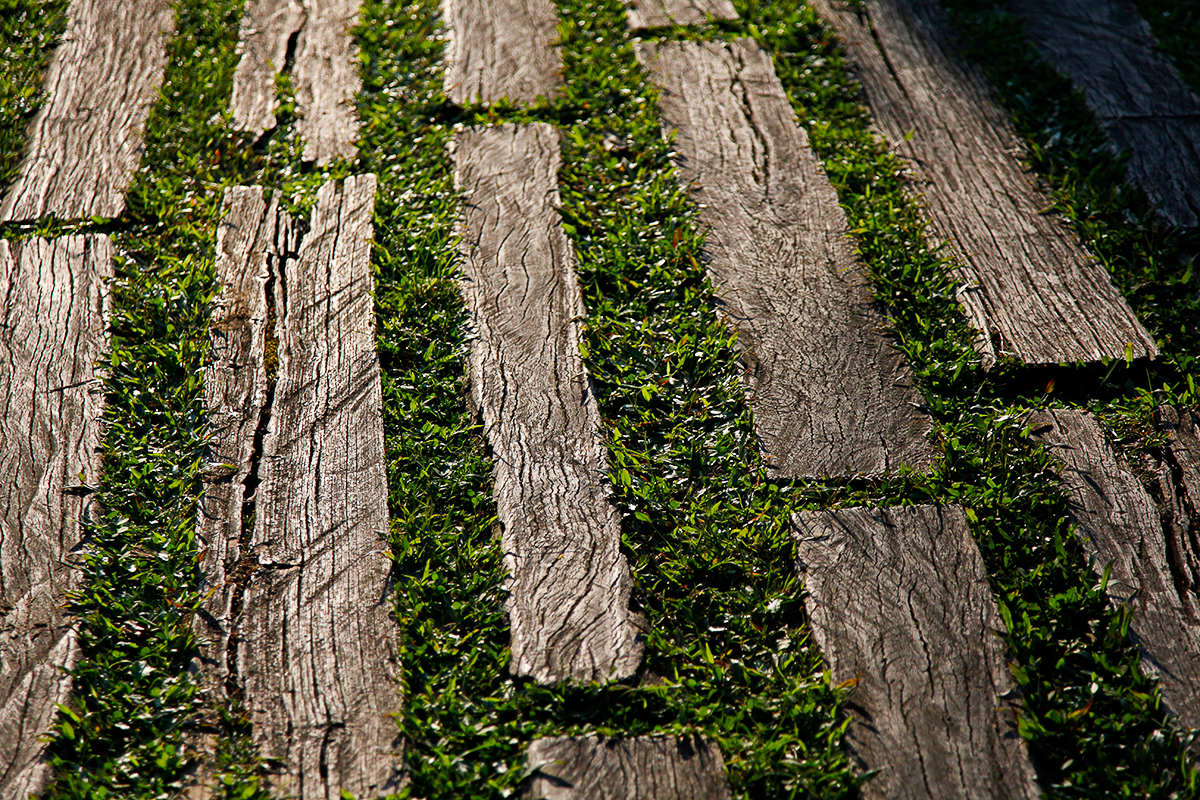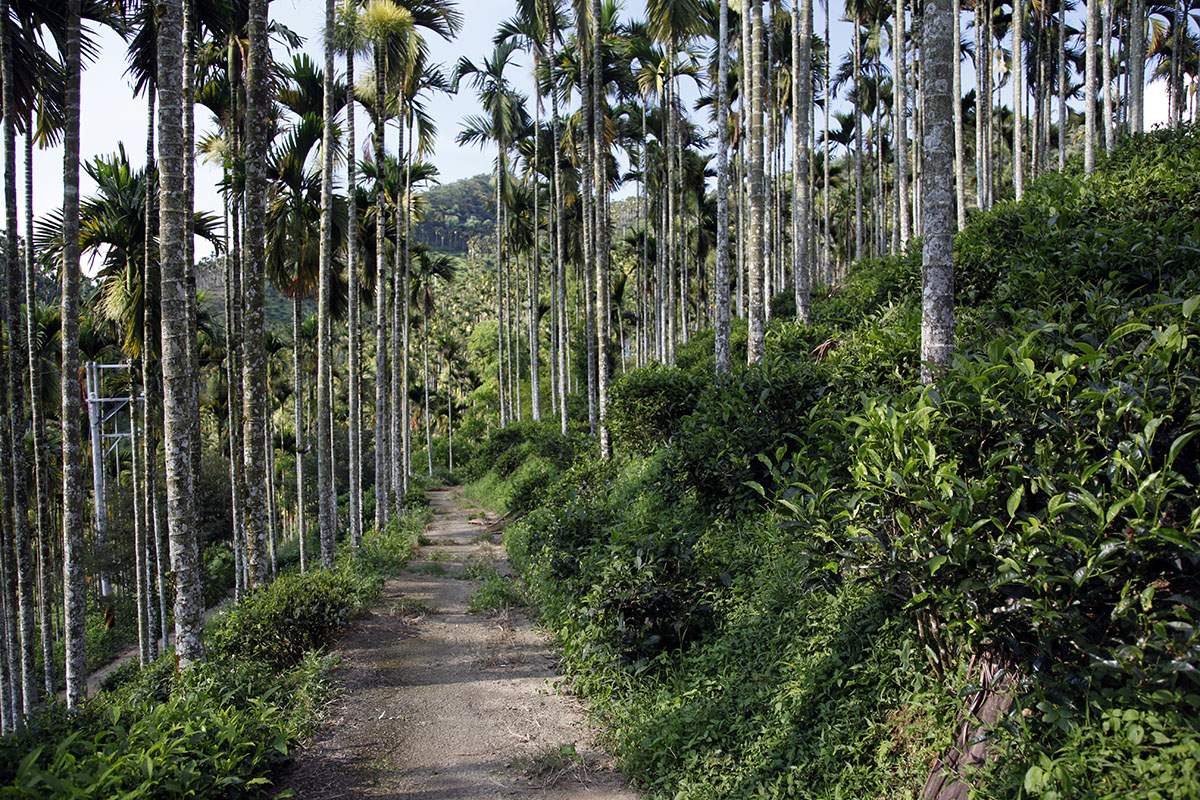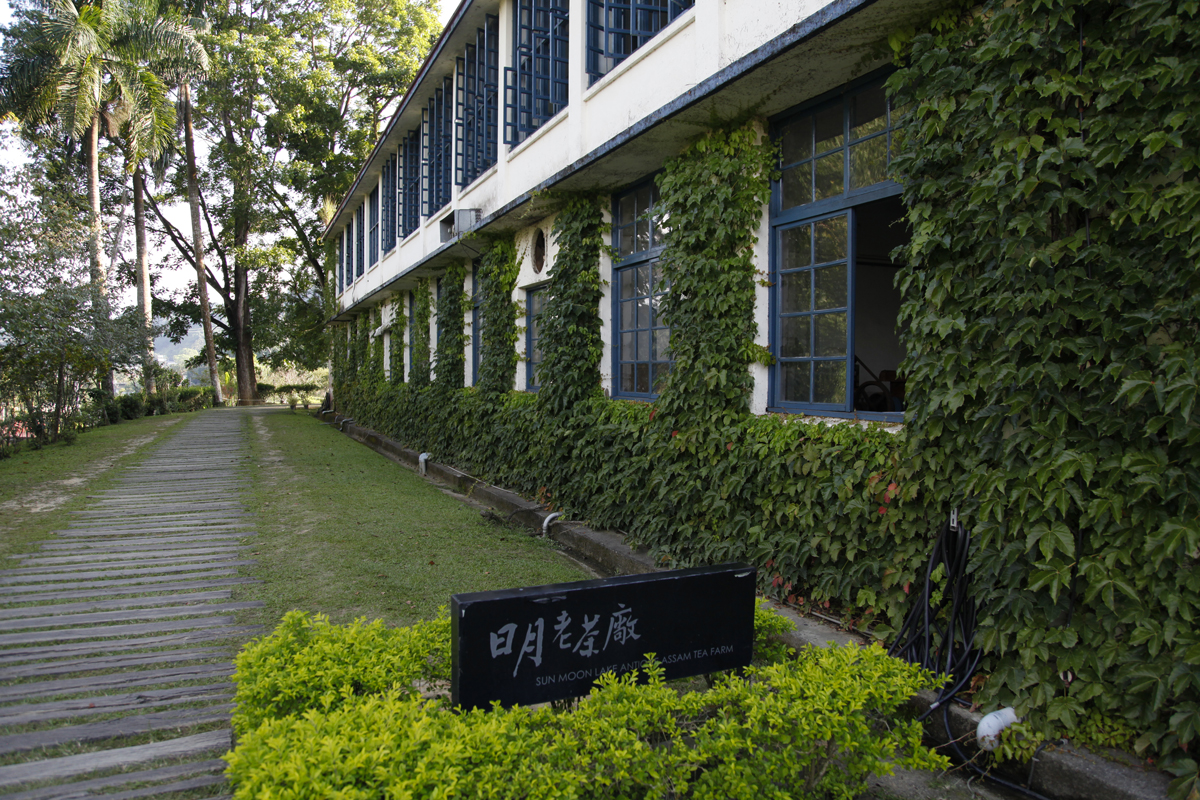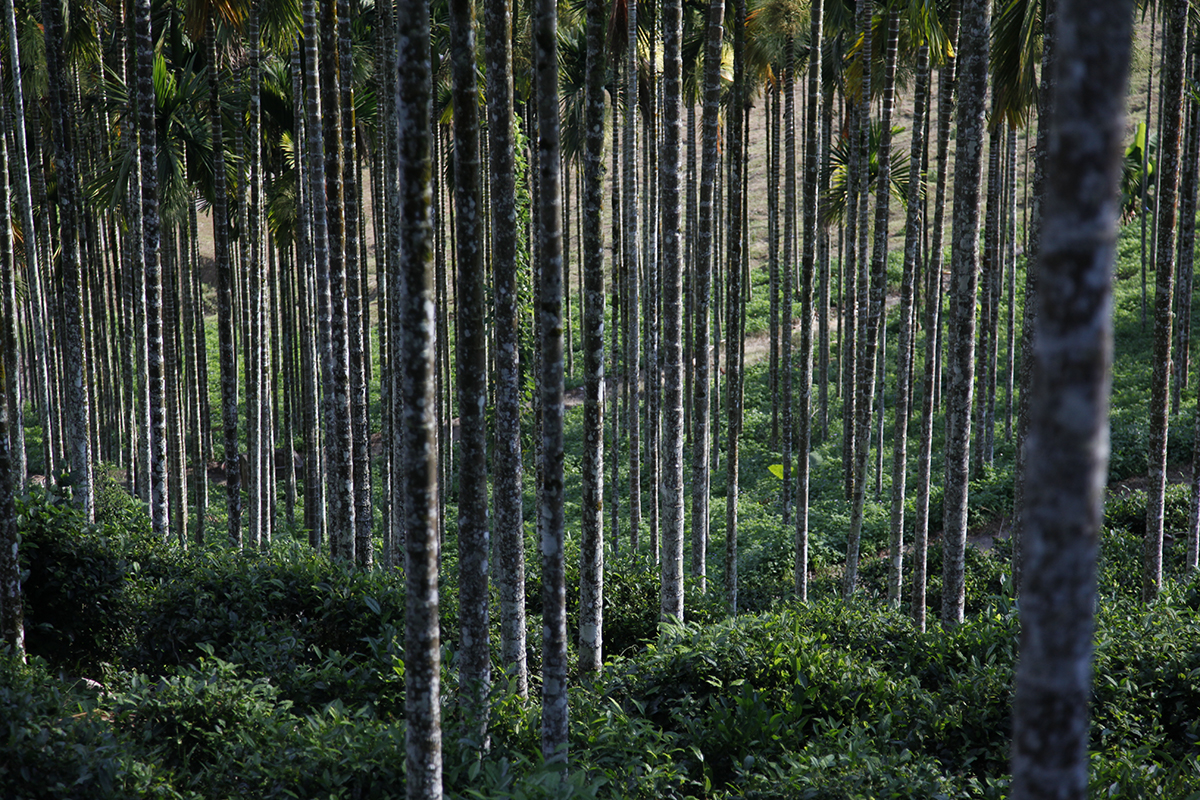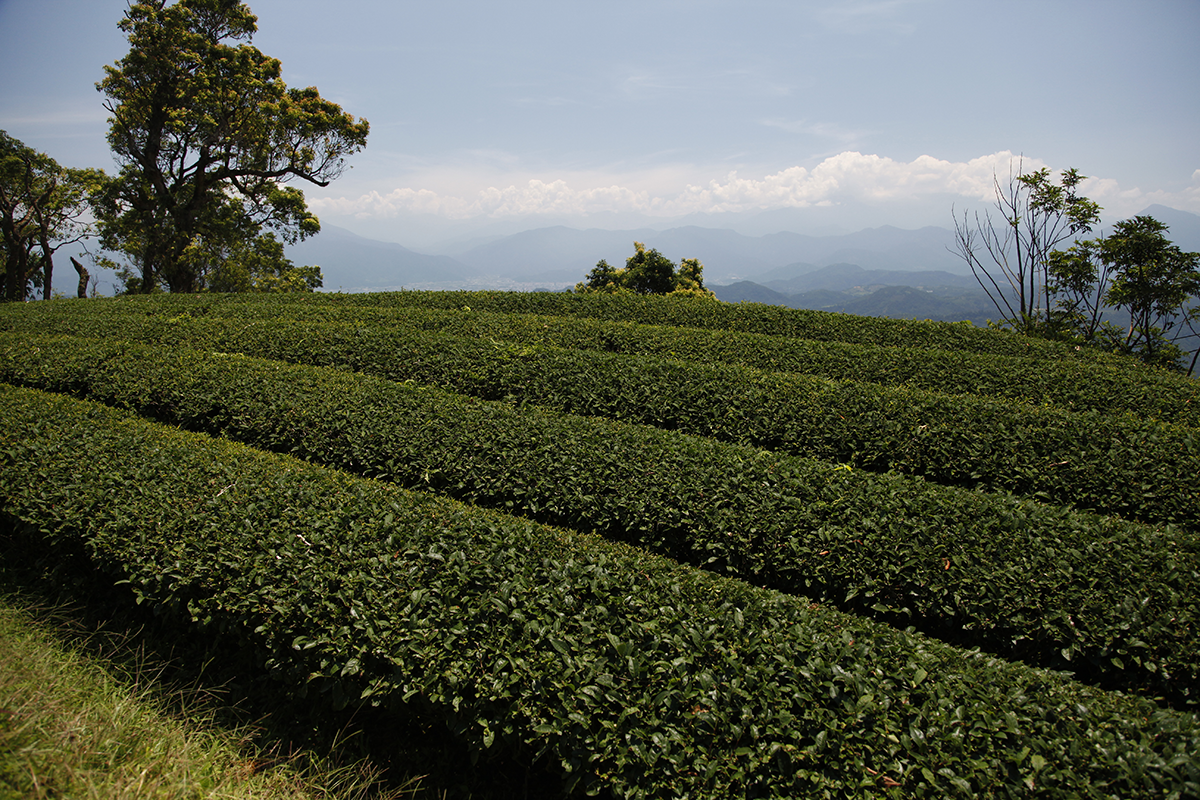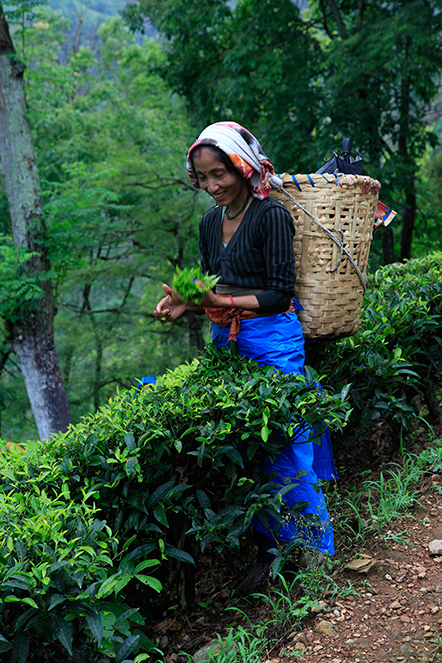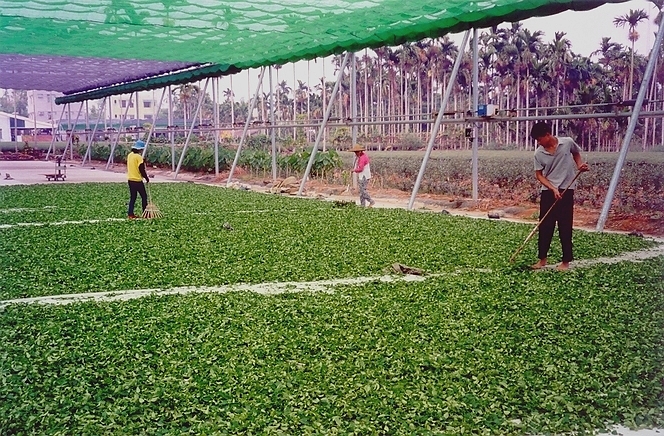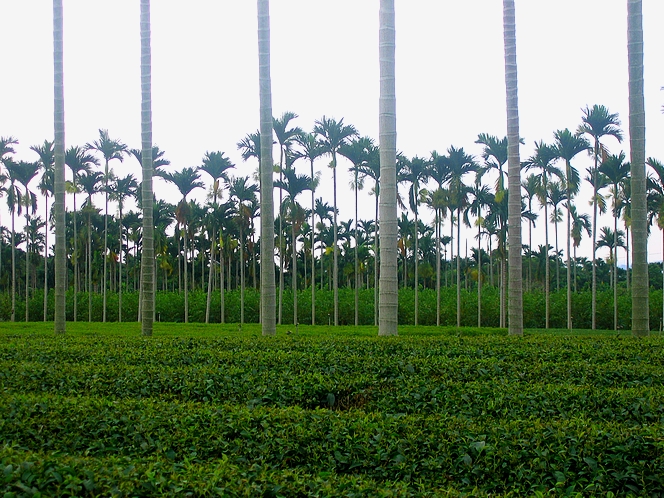If you take a Camelia sinensis leaf and pour hot water over it, you’l get nothing from it. The leaf needs to be roughened up first in order to release its aromas and flavours when it comes into contact with water. Immediately after picking, the producer will process the leaves, which removes much of their moisture and eventually breaks down their structure without breaking the leaves themselves, so that the juices contained within their many cells can be extracted. This is one of the machines that’s used here in West Java (Indonesia). A cloth sack is packed with tea leaves then squeezed hard between two metal discs. This tool is widely used in Taiwan for making Oolongs, and is also used to make green teas that are rolled into balls.
Taiwan
Beautiful harmony
Here in Taiwan, the ground outside the oldest black tea factory – now a museum – reminds me of my work. If left unpicked, the tender camellia shoots will gradually turn into stems, into wood. Thus the tea plant is made up of greens and darks, of soft and hard materials, of leaves and branches. This contrast of colours also reminds me of tea’s aromas, which are so often vegetal with green teas and woody with black teas. Everything here speaks of tea, right down to the beautiful harmony of the old boards between which a joyful shoot emerges.
Beneficial pain
With so much focus on the benefits of the vaccination needle, despite its brief sting, I wanted to look at a comparable phenomenon that affects the tea plant, in which momentary “pain” is beneficial. In some parts of the world, such as Taiwan and Darjeeling, a particular insect – a type of leafhopper called Jacobiasca formosana – likes to munch on the leaves of Camellia sinensis. The plant’s chemical response to this attack results in a rare, highly sought-after aroma in the cup. You will find this bouquet in an Oriental Beauty, for example, or a Darjeeling Muscatel. In these regions, farmers actively protect the insect to make sure they visit the plants and eat their leaves.
Beware the heat!
Tea plants don’t like extreme heat. In the hottest regions they are grown under cover, like here, in Taiwan. This is not quite the same as shade-grown tea. It means that from time to time the delicate little shoots get a bit of respite, and the leaves are not subjected to direct sunlight throughout the day.
A black tea factory that is now a museum, in Taiwan
The island of Taiwan is famous for its Oolong teas. They are oxidised to varying degrees and so develop notes that are more vegetal, or on the contrary, more woody. But these teas, which are also known as blue-green teas, do not represent all of the island’s production. There are also green teas and black teas in Taiwan. Regarding the black teas, here is the building where they were processed, at the time of the occupation and when the Japanese were toying with the idea of making Taiwan one of the world’s biggest producers of black teas. The Japanese wanted to compete with British teas made in India.
A vertical garden
Tea has a very good character. It gets on well with many plants. Here, high up in Taichung (Taiwan), it has a close relationship with Areca catechu. This palm provides the farmer with a supplementary income and our bushes with a little shade. It also lends an impressive verticality to these tea gardens, which are usually very horizontal.
High teas of high quality
In the centre of the island of Taiwan they produce Gao Shan Chas, high-altitude teas that are rolled into pearls. They are semi-oxidised teas that are withered, then lightly oxidised, roasted, rolled, dried and packaged. In the cup, the best of them develop fresh vegetal notes and a lovely opulent flowery bouquet (rose, hyacinth, jasmine), sustained by buttery, milky notes with an occasional hint of vanilla. These high-quality teas are produced in limited quantities.
Superb 2015 new-season teas
Calling all fans of “grand cru” teas! You now have access to the best selection of teas in the world. This is the optimum time of year to try the finest teas in existence. All are extremely fresh, newly delivered by air. There are first-flush and second-flush Darjeelings, new-season Chinese teas, and Japanese Ichibanchas harvested in May, alongside teas from Nepal, Taiwan and South Korea.
For tea-lovers, the start of the summer is a pure pleasure!
In Taiwan, people take great care of semi-fermented teas
In Taiwan, people take great care of semi-fermented teas (wu longs) left to wither outside. The grower first buy an electrical system of open-weave canvases that are moved across to shade the leaves when the sunlight gets too intense. Tea is then aired: it is raked very carefully, for hours, to prevent the leaves from starting to ferment.
Under the palm trees of Nantou, Dong Ding tea
In Taiwan, in the Nantou region for example, well-known for its Wu Long teas (Dong Ding, etc.), the tall and spindly trunks of the palm trees contrast with the rows of tea plants and give the landscape a very graphic appearance.
I have to admit that this impression is emphasized by the fact that I have been a little disrespectful to the posers in the foreground by chopping their head off…

